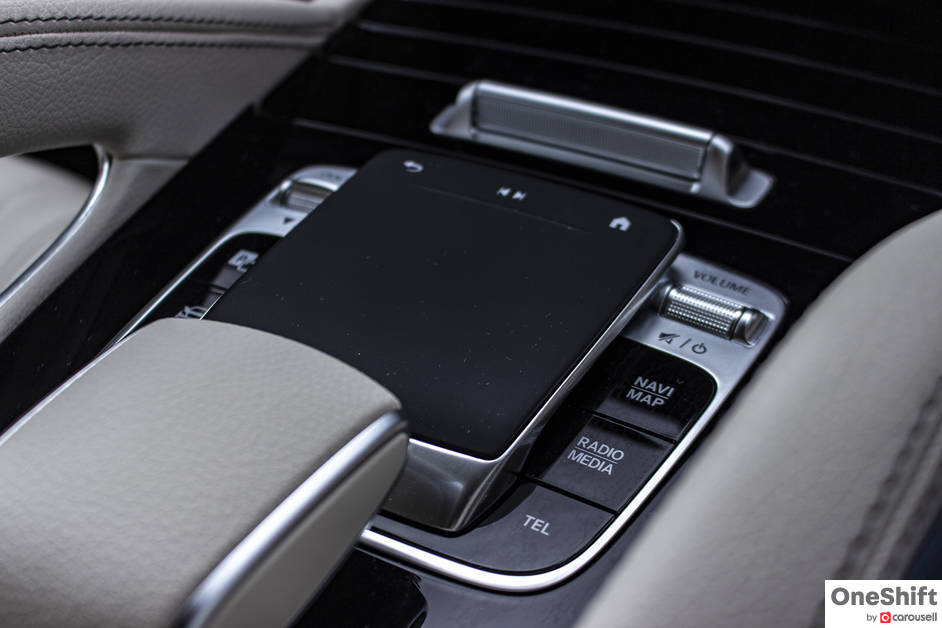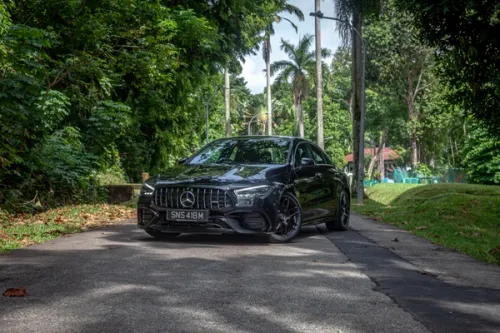On Cloud GLE
The Mercedes-Benz GLE offers plush accommodation for five and now, another +2, adding with it a little more appeal as an Executive SUV.


The Mercedes-Benz GLE offers plush accommodation for five and now, another +2, adding with it a little more appeal as an Executive SUV.
Therefore, the new GLE now challenges the competition head-on, which is the recently updated Lexus RX 350L, the Audi Q7, which is due for a makeover, and the very new BMW X5; all of which are able to carry seven. Launched last year, it did take us quite a while before we got our hands on Merc’s mid-tier luxury SUV, and it is one of our first cars we obtained, post-Covid Circuit Breaker.

The new Mercedes-Benz GLE sports smoother and less chunky bodywork compared to its predecessor. Its design language which is in-line with their current new range of cars, like the very sporty CLS, is a welcome improvement, especially with its new front-end and sleeker rear tail lights. The GLE’s slipperier body shape also translates to what Mercedes-Benz claims as segment-leading drag-coefficient of 0.29Cd, versus the preceding car’s 0.32Cd.

To accommodate for more passengers, the new GLE is a larger car. Its wheelbase has been extended by 80mm, increasing the space between front and rear wheels to 2,995mm; the overall addition of 105mm to the car, brings the GLE’s length to 4,294mm.

There is just one model available over here for buyers, the AMG Line, which means that the GLE is fitted with the standard Diamond Grille, 20” AMG twin 5-spoke wheels and is decorated with slivers of silver trim.
We like that Mercedes has done a good job with their dashboard’s layout, with easy to read instrumentation, and neatly positioned air-conditioning vents; and it is aesthetically pleasing and feels upscale. Quality here is also better than what was found on the previous GLE. Since it is an SUV, the centre console also has a pair of grab handles; they are functional, since Mercedes-Benz had intended for the GLE to be able to handle some decent off-road rough n’ tumble.

Just like with newer “Mercs”, which includes their entry class cars, like the CLA, the GLE features a “snowboard” style display which houses two 12.3” screens; one which functions as the driver’s instrument panel, and the other which fronts the GLE’s MBUX (Mercedes-Benz User Experience) - enabled infotainment system. Controlling the system is via a trackpad, which features haptic and audible feedback, while additional controls flank the trackpad. A small issue though, Mercedes has made the decision to ditch USB-A ports across their new range of cars, in favour of only USB-C ones.

The MBUX is further enhanced by a camera, which sits in the overhead control panel, designed to distinguish if the driver or front passenger is operating the system. The MBUX is customisable by both driver and passenger, with the system knowing who is operating it. The MBUX is also able to pick out simple hand gestures, and also learns about your frequent habits, so that it can anticipate guiding you to regularly visited destinations.

With the increase in internal space, passenger accommodation for the electrical adjustable middle row has increased by almost 70mm, which also means that occasional rear passengers are able to get their precious legroom, by adjusting the middle row up to 100mm forward. Rear headroom has also increased by 35mm, and this is intended to provide enough room for the last row of passengers.

While the back row of seats can be folded down electrically, I do find it odd that you would still have to manually fold them into place if you wish to deploy them. Those who are shorter than 165cm, would likely find it challenging reaching for the release catches sited on the seat shoulders.

With the back row folded, cargo space stands at an impressive 825 litres (630 litres with the rear seats deployed), and up to 2,055 litres with the 40:20:40 middle row folded.

The GLE powered by Mercedes-Benz’s all-new straight-six M256 turbocharged engine, supplemented by 48-volt electrification, and features their new EQ Boost (a BorgWarner-supplied electric auxiliary supercharger). The EQ Boost delivers torque on-demand, for zero lag take-offs, ideal for the rigors of city start-stop conditions. The engine alone delivers a healthy 357hp and 500Nm, with an additional 250Nm and 22hp produced by the EQ Boost supplementary system.

Drive is provided to four wheels via a 9G-TRONIC transmission, and there is an available transfer case with low-range gearing option for those who are keen to take advantage of the GLE’s ride height to go off the beaten track. However, I believe that there will be no takers here.
There is also the optional E-ACTIVE BODY CONTROL system, which is an ideal pairing with the low-range transmission. The E-ACTIVE BODY CONTROL combines with the GLE’s newly developed AIRMATIC air suspension, all of which is powered by the 48-volt battery. The system is the only one currently able to control spring and damping forces in each individual wheel, and works in tandem with a frontal camera, which scans the road surface. The result is possibly one of the best rides attainable from a car in its class. The system also has an ingenious rocking mode, which is designed to help extricate the GLE if you find yourself stuck when offroad.
While our test car was not equipped with both the AIRMATIC and E-ACTIVE BODY CONTROL suspension, the GLE already delivers a supple ride, with the adaptive suspension stiffening up just enough to accommodate the occasional heavier right foot, without over-compromising on ride quality. Overall, the GLE delivers confidence even around twisty sections of tarmac. While we do enjoy how the luxury SUV handles, wet conditions reveal a slightly nervous car, with some twitchiness at speed.

Within the cabin, the GLE is silent, with very little external noise intrusion. Both axles of the GLE are connected to the body by subframes, offering occupants better isolation, and upping its already silky-smooth ride quality.
Within tight confines, the GLE, though almost at 5 metres is easy to steer, with decent-enough all-round visibility, supplemented by a very good 360 degree camera.

Safety-wise, the GLE’s body structure is around 20% more rigid than the car it replaces. With a larger footprint, and weight being the enemy, the GLE does also feature some innovative weight reducing materials, like Organo (fibre-reinforced plastic, that can be processed like metal) panels used on its front-end members, and quite a liberal use of lightweight aluminium throughout its build. At around 2,300kg, the GLE is still no lightweight, and our fuel consumption was at best 12.3L/100km.
The GLE is currently priced at $373,888*, and includes the lovely AIRMATIC suspension with Adaptive Damping System, which to us is already ideal for our roads. The E-ACTIVE BODY CONTROL system will set you back another $31,000, and we feel it is not necessary.

The Executive “Merc” SUV certainly does not come cheap, when compared to other luxury SUVs that can carry up to 7 passengers, the BMW X5 Drive40i X Line which has a more conventional drivetrain retails lower at $342,888*, inclusive of its hefty VES penalty. On the other hand, the Lexus RX 350L which in all has lesser bells and whistles, and utilises a conventional natural-breathing 3.5 litre V6 costs significantly less at $292,800*. Those who would like a true offroading experience can opt for the Land Rover Discovery 3.0 SDV6 HSE… more rugged, less lux, going for $364,999*, which benefits from a high-torque diesel, similar to the one we tested near launch.
*Prices correct as at 12 August 2020
#SG #Singapore #SUV #Luxury #GLE #Roadtest #Review #Cars #Autos #EQBoost #Testdrive #test #Daimler #mercedesBenz #Executive #German #Stuttgart
Credits: Words and Photos by Clifford Chow








Get the Best Price for your used car
from 500+ dealers in 24 hours

- Convenient and Hassle-Free
- Consumer Protection
Transparent Process
With No Obligation







